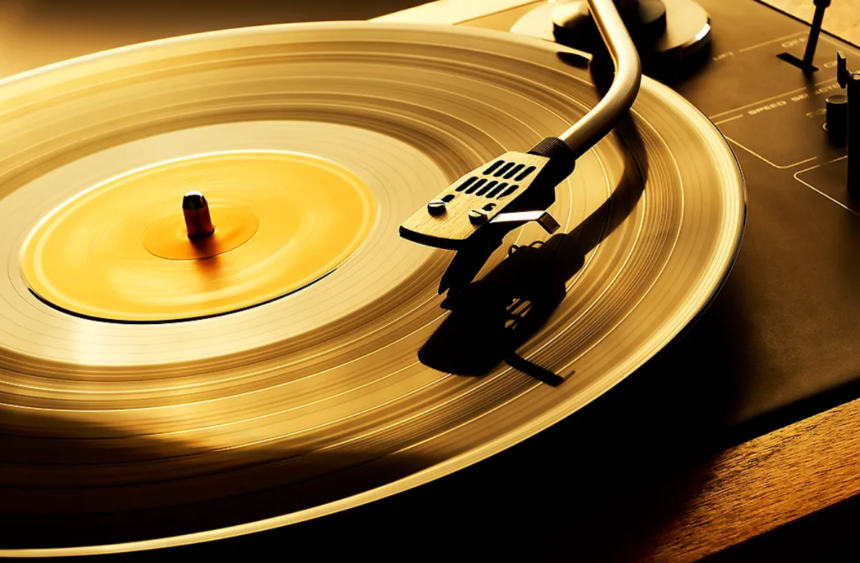Interest in analog audio keeps rising, as physical music formats reclaim attention from a digital world. Many enthusiasts find themselves wondering whether that old box of LPs in the attic holds any overlooked treasures, or how some recent pressings might fetch surprising prices in collector circles. This guide will explore the critical factors determining how much certain discs can be worth—without overusing keywords—by looking closely at age, rarity, demand, and the essential role of condition in appraisals.
In addition, you will discover practical tips for evaluating your collection, strategies for caring for these delicate artifacts, and insights into broader market forces that keep the hobby alive and dynamic. By the end, you will have a clear sense of how all these elements fit together, and how to enhance your experience as both a listener and a collector.
The Enduring Appeal of Physical Formats
There is something profoundly rewarding about music you can hold in your hands. Sliding a disc out of its sleeve, admiring carefully crafted cover art, and setting the needle on the groove turn a simple act of listening into a multi-sensory ritual. It is not just about sound fidelity—although many argue that an analog setup delivers warmth and depth—but also about forging a tangible connection to the recording process and musical heritage.
Albums frequently come with liner notes, lyric inserts, and unique design elements that digital formats lack. These details foster a deeper relationship with the music, bridging the gap between performer and audience. As new listeners discover the magic of physical audio, demand grows for older classics and limited pressings alike, which in turn influences vinyl records value on the market. In the sections that follow, we will break down how age, scarcity, and other variables can affect a record’s desirability.
Age: More Than Just a Number
When it comes to appraising these discs, age is sometimes misunderstood. Many assume older always means more valuable, but the reality is nuanced. Vintage pressings can indeed capture cultural milestones or represent the earliest appearance of legendary artists, yet age alone does not guarantee a high price.
Historical Significance
Albums from pivotal eras—be it the rock explosion of the 1960s, the surge of punk in the late 1970s, or the rap and hip-hop breakout in the 1980s—tend to garner attention for their historical importance. Original issues of such groundbreaking records can become hot-ticket items, especially when they come from artists who reshaped music culture. Age plays a part here, but it is typically the context surrounding an older record that raises interest.
Not All Vintage Releases Are Rare
Although some older titles appear less frequently, others remain surprisingly abundant. Certain iconic artists sold millions of LPs, and those copies still circulate in secondhand shops. A 50-year-old album that sold in the millions does not necessarily command a premium, especially if it is still relatively easy to find. On the flip side, a 1990s release might attract serious attention because vinyl production dropped dramatically in that decade—some albums were pressed in very limited quantities, making them harder to locate today.
Rarity: The Undeniable Influence
Scarcity is often the biggest determinant of how much collectors are willing to pay. Even a record from a lesser-known band can become a sought-after artifact if only a few copies were ever produced or if a particular version comes with unique traits.
Special Pressings and Limited Runs
One driving force behind rarity is intentional limitation. Record labels sometimes produce a small batch of colored vinyl or a run of picture discs. Even a mass-appeal album can become highly collectible if a small subset of copies features different artwork or an unusual color. The thrill for collectors lies in the hunt—knowing that the variant is not widely available.
Labels and retailers now also participate in events like Record Store Day, releasing exclusive titles that quickly sell out. These special releases might have unique track lists or packaging that never gets reprinted, boosting demand among fans and future collectors.
Misprints and Withdrawn Covers
Unexpected production mistakes can create unintentional rarities. Misprints on labels or sleeves, or entire cover artworks that get withdrawn after public controversy, make surviving copies exceptionally desirable. Over the years, these accidents have become legendary in collector circles, partly for their novelty and partly for the sense of owning a piece of “forbidden” music history.
Demand: Why People Are Willing to Pay
While rarity deals with the supply side, demand relates to cultural importance and personal attachment. A scarce album might still languish in obscurity if nobody knows or cares about it, but an in-demand classic can remain pricey even if plenty of copies exist.
Legacy and Influence
Music from iconic artists such as The Beatles, Bob Dylan, or Nirvana consistently stirs collector interest because of its enduring impact. A record that marked a key turning point or captured the zeitgeist of an era can cement itself as a must-have for enthusiasts and music historians alike. The perceived cultural weight helps keep it relevant and valuable over the long run.
Emotional and Nostalgic Ties
Emotions drive market interest in unpredictable ways. Many collectors invest in albums tied to their formative years—those that evoke memories of adolescence or major life events. Nostalgia can push buyers to pay more, even if the album does not rate as especially rare in a broader sense. As a new generation discovers earlier genres (classic rock, soul, disco, grunge), older records can enjoy a renewed wave of popularity, pushing up prices again.
How Condition Ties In
In a hobby reliant on physical media, condition is crucial. A worn disc or a tattered cover drastically reduces its appeal and its potential sale price. This is where aspects of storage, handling, and grading become pivotal. Recognizing how to preserve your albums helps retain their desirability in the collector’s market. Since grading ties directly into evaluating worth, you will often see sellers list both the disc and sleeve condition using terms like Mint (M), Near Mint (NM), Very Good (VG), and so forth.
Proper Storage and Handling
To keep albums in top shape:
- Store them upright, not stacked, as constant pressure can lead to warping.
- Keep them out of direct sunlight and away from heat sources.
- Use anti-static inner sleeves and protective outer sleeves to guard against dust, scratches, and ring wear.
Because older or delicate records might be more prone to scuffing and surface noise, a careful approach is key. Even new pressings benefit from attention to environmental factors like temperature and humidity.
Cleaning and Maintenance
Dust, oils, and other contaminants accumulate on disc surfaces. Specialized cleaning kits and brushes can help remove grit, prolonging the life of both the record and the stylus. A well-maintained turntable with a properly aligned cartridge also reduces wear, which can render even a pristine album crackly over time.
Evaluating Your Collection
Because condition, age, and scarcity all converge to influence prices, it is wise to perform a methodical assessment of any discs you find in your basement or purchase at a local flea market. Below is the only numbered list in this article, outlining steps to get you started on evaluating what you have:
- Identify the Pressing: Look for catalog numbers, matrix/run-out etchings, and label details. These tell you which version you own and how common or unique it may be.
- Assess Condition: Check both the grooves and the sleeve for signs of wear. Even slight scratches or faded artwork can reduce desirability.
- Research Comparable Sales: Visit online marketplaces, collector forums, or reference guides to see recent selling prices for the same pressing in similar condition.
- Consult Experts: If you suspect a variant (e.g., a test pressing, misprint, or rare regional edition), local record shops and online communities can often help verify authenticity.
- Document Everything: Keep notes about pressing details and condition, especially if you plan to sell in the future. Documentation saves time and enhances credibility with potential buyers.
This process might be time-consuming, but it pays off by helping you avoid underselling a hidden gem or overspending on a title that is not actually rare.
Common Pitfalls to Avoid
Even seasoned hobbyists slip up now and then. Below is the only bulleted list in this piece, highlighting traps that can trip up newcomers and veteran collectors alike:
- Skipping the Matrix Details: Relying solely on cover or label appearance may cause you to miss distinct pressing variations.
- Poor Storage Habits: Exposing your discs to heat, moisture, or direct sun can lead to warping and mildew.
- Ignoring Market Shifts: Tastes change. A less popular genre can become fashionable, or a trendy artist might wane in appeal. Keeping tabs on shifts helps you time your buys and sells better.
- Falling for Fakes: Rare albums often get counterfeited. Look carefully at print quality and matrix numbers; if something seems off, consult a known expert or comparison images.
- Forgetting Authenticity Proof: Without documentation or photographic evidence of certain features, potential buyers might be skeptical—especially for test pressings or autographed items.
Steering clear of these missteps keeps your collection in better shape and spares you from losing money on questionable acquisitions.
Emotional and Cultural Dimensions
Market factors alone do not explain the enduring fascination with physical releases. Many owners treasure these artifacts for personal reasons: they remind them of a concert, a summer road trip, or a family tradition. The emotional resonance of a beloved album can be priceless to the individual who holds it.
Beyond private sentiment, some LPs reflect broader cultural or political shifts. Albums associated with social protest, anti-establishment sentiments, or watershed moments in popular culture acquire a unique status. These releases become historical documents, capturing not just an artist’s work but also the spirit of a generation. When an album has both emotional gravitas and historical significance, demand tends to remain steady, if not grow, over time.
Investment Potential
Some enthusiasts approach collecting as a long-term investment. They see parallels between building a stash of premium records and investing in fine art or rare books. While this can be lucrative, the market is not without its risks:
- Volatile Trends: Shifts in musical taste can cause once-coveted records to stagnate.
- External Factors: Anniversaries, reissues, and even an artist’s passing can spike prices abruptly, but they can also drop once interest fades.
- Long-Term Holding: Many collectors “buy and hold,” meaning they plan to keep items for years or decades. This strategy assumes there will always be future demand, which is not guaranteed.
To mitigate risks, some buyers diversify by including genres beyond just classic rock or mainstream pop. Jazz rarities, indie releases from the ‘90s, and even some modern electronic pressings can balance a collection. The key is focusing on quality, authenticity, and historical or artistic significance rather than short-term hype.
Where to Buy and Sell
Deciding where you obtain your discs or let them go can impact both the final price and the ease of the transaction:
- Local Record Shops: These places often have staff who know the nuances of different pressings and can help you identify unusual editions. Buying in-person also grants the advantage of visually inspecting the item before purchase.
- Record Fairs and Conventions: Perfect for discovering hidden gems or negotiating trades with fellow collectors. Be prepared to navigate a wide range of conditions and prices.
- Online Platforms: Sites like Discogs and eBay connect buyers and sellers worldwide. You will find a massive selection, but shipping costs and potential disputes about grading can complicate matters.
- Auctions or Specialized Groups: Certain high-value collectibles are best sold through reputable auction houses or niche forums. This option provides a more targeted audience, though listing fees or commissions might be higher.
Transitioning from one selling channel to another might make sense depending on market developments, the uniqueness of your collection, and how quickly you want to finalize a sale.
Tying It All Together
From legendary 1960s pressings to contemporary limited-edition reissues, the world of collecting is deeply nuanced. Age, scarcity, and cultural demand combine in complex ways, and the condition of an album is integral to its ultimate worth. Understanding each of these elements ensures that when you sift through used bins or consider letting go of a prized disc, you do so with clarity.
By tracking pressing details, committing to proper storage, and staying informed about market shifts, you position yourself to make more knowledgeable decisions—whether you are hunting down a rare gem or planning your next sale. Although certain releases can be pricey, many collectors find that the intangible rewards of building a curated library far exceed any monetary benefit. The joy of discovering something truly special, spinning it at home, and sharing that music with friends offers a unique fulfillment that streaming playlists rarely match.
In the end, whether your motivation stems from monetary prospects, historical appreciation, or pure love for the format, the journey can be as rewarding as the destination. Every new pressing or vintage find adds another layer to your personal narrative. By blending an awareness of age, rarity, demand, and condition, you will be well-equipped to explore the joys—and possible financial upsides—of this captivating hobby for many years to come.















